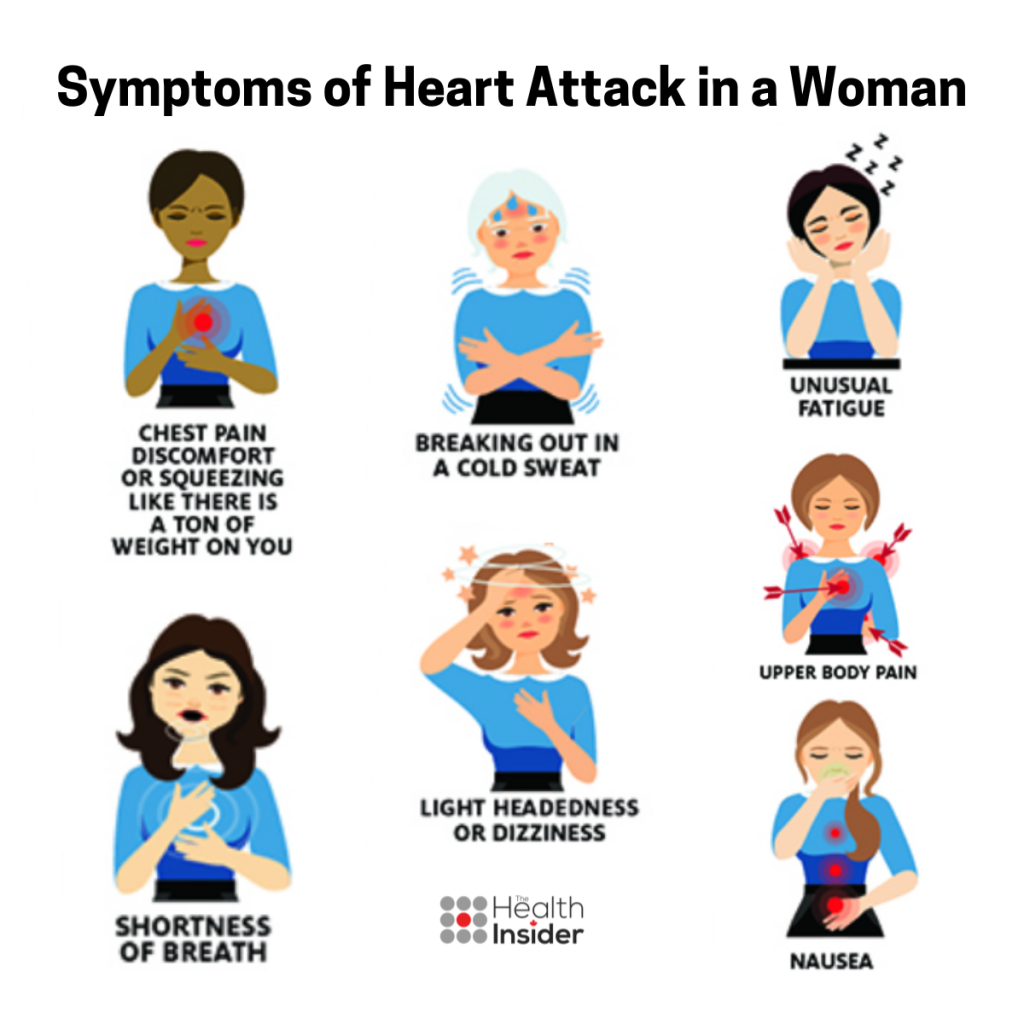As a human being I have a heart but I also happen to be a woman, so I was shocked to recently read that in Canada a woman dies of heart disease every 22 minutes, and many were preventable. As I dove down the rabbit hole of information about heart disease in women I cycled through a predictable range of jarring emotions, with anger haloed by situational hypochondria being the predominant ones.
My outrage was only slightly tempered by the acknowledgement by experts that in the field of heart health, gender bias persists. Cardiovascular research, diagnosis, and treatment is still predominantly focused on men, leading to a lack of knowledge and understanding when it comes to cardiovascular disease in women.
This bias manifests in underdiagnoses, undertreatment, and a general lack of heart disease awareness among medical practitioners and women. For example, only 11% of Canadian women can name one or more of the female-specific risk factors for heart disease and stroke.
Perhaps, like many women (and clearly, many medical professionals) I had simply never given heart health specific to my sex and hormonal makeup much thought. But the tragedy of this obvious disregard is that women often experience poorer outcomes when they develop cardiovascular disease compared to men.
Cardiovascular Disease Leading Cause of Death for Women
In fact, cardiovascular disease is the leading cause of premature death for women in Canada; according to the Canadian Women’s Heart Health Centre nearly five times more women die from heart disease than from breast cancer.
As women, we are well aware that we need to get mammograms as we edge towards perimenopause, but how is it that our awareness of our cardiovascular health is so pathetically low? How did we get to such a dire place, where do we go from here and how do women help themselves in the interim?
And I know you’re asking…how did I calm myself down? More on that later.
It Starts with Research
Women have long been under-represented in cardiovascular disease research. In the past, women of childbearing years were barred from clinical testing out of fear that if the woman became pregnant, the drugs being tested may harm the fetus.
While the rules have changed, patriarchal culture is so deeply embedded in health care that to date, fully two-thirds of participants in clinical trials on heart disease and stroke have been men. When women have been included, analysis based on sex is not always done.
Moreover, medical research and new drug testing usually start with studies on mice and rats however most lab test animals are male. This has led to increased and unknown risks for women using drugs for treatment. For example, of the 10 major drugs pulled from the shelves over the last 20 years, eight have posed greater health risks for women.
In fact, some scientists suspect men and women respond differently to many kinds of drugs but they have very little supporting data due to lack of research.
Unique Risk Factors for Women
During a woman’s reproductive years estrogen plays a protective role in heart and brain health, depending on a variety of factors.
1.Oral contraceptives
Oral birth control increases the risk of high blood pressure and blood clots. Women should discuss with their health care providers prior to making the decision to take hormonal contraceptives and should get regular checkups to ensure that the contraceptive is not endangering their health.
2.Pregnancy
Pregnancy puts women at risk for numerous life-threatening conditions that may put them at higher risk of heart disease and stroke.
These include:
▪ Preeclampsia
▪ Gestational diabetes
▪ Pregnancy related stroke
▪ Peripartum cardiomyopathy (PPCM)
Prenatal care is at the heart of navigating a healthy pregnancy. Make sure you see your obstetrician or family doctor regularly to ensure your prenatal screenings are on point.
3.Menopause
Due to the drop in estrogen production that occurs in menopause, women see a sharp increase in the risk of heart disease and stroke at this stage of life. The risk for women who experience early onset menopause is even higher.
Natural estrogen helps to keep cholesterol levels in a healthy range. After menopause, as estrogen levels drop, it is not uncommon for women to develop high cholesterol, along with high triglycerides.
Speak with your medical professional about the health impact of menopause and your treatment options. Be sure to get your cholesterol levels tested if you are transitioning through perimenopause.
Heart Attack Symptoms in Women

According to the Canadian Heart and Stroke Foundation, the symptoms of half of women who have a heart attack go unrecognized as they do not fit the textbook picture of heart disease we all think of when picturing a heart attack.
Women are more likely to experience chest discomfort (rather than a crushing pain), shortness of breath, fatigue, indigestion or nausea, back or neck pain.
Additionally, many women find themselves gaslit by the medical community leading to barriers for care and forcing women to advocate for themselves while attempting to find the health care they need.
Heart Disease in Women: Diagnosis and Treatment
Major disparities between women and men in the diagnosis, management, and outcomes of acute coronary syndrome are well recognized. Women with a suspected heart attack are less likely to undergo evidence-based investigations and doctors are far less likely to recommend timely treatment for heart disease and heart attacks in women.
Moreover, as women’s heart disease appears in the small blood vessels, angiograms are not effective at diagnosing heart attacks in women. Stress tests are also less sensitive for women, with some studies finding that imaging tests helped predict future heart events better than stress tests for women. As a result, women are more than twice as likely to have adverse outcomes such as death in both the short and long term.
Heart Rehabilitation
Cardiac rehabilitation is crucial for recovery from an acute cardiac event. The program of exercise, education and counselling helps patients recover with the goal of helping the patient regain strength, prevent the condition from worsening and reduce the risk of having future heart problems.
Additionally, rehab helps people heal emotionally. Women experience more depression than men after a cardiac event, but they are only half as likely to attend and then follow a rehab program.
There are several reasons for this, namely cost and time as, depending on where you live, rehab will only be partially, if at all, covered under provincial Medicare. Many of the women who need cardiac rehab the most are the least likely to be able to access it, which further leads to poor outcomes.
See here for cardiac rehabilitation services in your area.
Advances in Women’s Heart Health
Research specific to women’s heart health will go a long way to understanding how to help women with their heart health. A study at Toronto’s Mt. Sinai Hospital is doing just that by seeking to understand how the mechanics of the heart and circulation work, and how it’s affected by aging along with the difference in heart complications for men and post-menopausal women.
The Mayo clinic is conducting research using AI to screen for cardiomyopathy late in pregnancy or postpartum. Another study at the Mayo is evaluating the cardiac risk of estrogen therapy in young women who have had both ovaries removed. A third is looking at the blood vessel health of non-pregnant women to get a clearer picture of who is at risk for heart disease and for preeclampsia in pregnancy.
Scientists are now realizing that they need to identify different heart health metrics specific to women. For example, experts suggest that it could be just a matter of years before the threshold for normal blood pressure will be lower in women than men.
In the realm of medical devices women have also been dangerously underserved. According to the U.S. Food and Drug Administration (FDA), 67% of the people that the agency knows to have been injured by a medical device are women. Alarmingly, the lack of inclusion women in preclinical trials often means that the harm to women is not observed until the drug or device is in widespread use.
The United States is taking steps to right this with the Health of Women Program strategic plan while in Canada, we have the Canadian Women’s Heart Health Alliance. This organization is committed to developing and disseminating evidence-informed strategies to transform clinical practice and augment collaborative action on women’s cardiovascular health in Canada.
What Women Can Do Now to Protect Their Hearts
- Advocate for yourself
- Be aware of your own data and leverage technology to communicate your metrics with your doctor
- Ask for second opinions
- Know your risk factors
- Educate yourself about women and heart disease
See here for The Canadian Heart and Stroke Foundation’s Living Well with Heart Disease Guide.
While I was able to find some hope in the future of women’s healthcare, the only way I know how to cope with the knowledge that the medical system has ignored the health of half of the population is to be aware of my own healthcare needs, advocate for myself and to spread the message. In the short term, forest bathing and deep breathing have been saviours for my mental health as I ponder this reality, along with a newfound commitment to my heart health.
Life stages play a crucial role in women’s heart health. Learn the signs and remain vigilant. By combating gender bias and promoting equitable research and healthcare practices, we can work towards closing the gap in heart health outcomes that exist between men and women.
The information provided on TheHealthInsider.ca is for educational purposes only and does not substitute for professional medical advice. TheHealthInsider.ca advises consulting a medical professional or healthcare provider when seeking medical advice, diagnoses, or treatment.










